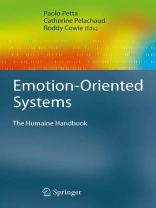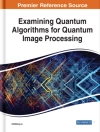Emotion pervades human life in general, and human communication in particular, and this sets information technology a challenge. Traditionally, IT has focused on allowing people to accomplish practical tasks efficiently, setting emotion to one side. That was acceptable when technology was a small part of life, but as technology and life become increasingly interwoven we can no longer ask people to suspend their emotional nature and habits when they interact with technology.
The European Commission funded a series of related research projects on emotion and computing, culminating in the HUMAINE project which brought together leading academic researchers from the many related disciplines. This book grew out of that project, and its chapters are arranged according to its working areas: theories and models; signals to signs; data and databases; emotion in interaction; emotion in cognition and action; persuasion and communication; usability; and ethics and good practice.
The fundamental aim of the book is to offer researchers an overview of the related areas, sufficient for them to do credible work on affective or emotion-oriented computing. The book serves as an academically sound introduction to the range of disciplines involved – technical, empirical and conceptual – and will be of value to researchers in the areas of artificial intelligence, psychology, cognition and user—machine interaction.
Зміст
Area I – ‘Theories and Models’ of Emotion.- 1.0 Editorial – ‘Theories and Models” of Emotion.- 1.1 Emotion – Concepts and Definitions.- 1.2 Emotions in Social Interactions – Unfolding Emotional Experience.- 1.3 Biological and Computational Constraints to Psychological Modelling of Emotion.- Area II – Signals to Signs.- 2.0 Editorial – “Signals to Signs” – Feature Extraction, Recognition and Multimodal Fusion.- 2.1 The Automatic Recognition of Emotions in Speech.- 2.2 Image and Video Processing for Affective Applications.- 2.3 Multimodal Emotion Recognition from Low-Level Cues.- 2.4 Physiological Signals and Their Use in Augmenting Emotion Recognition for Human—Machine Interaction.- Area III – Data and Databases.- 3.0 Editorial – ‘Data and Databases”.- 3.1 Principles and History.- 3.2 Issues in Data Collection.- 3.3 Issues in Data Labelling.- 3.4 The HUMAINE Database.- Area IV – Emotion in Interaction.- 4.0 Editorial – “Emotion in Interaction’.- 4.1 Fundamentals of Agent Perception and Attention Modelling.- 4.2 Generating Listening Behaviour.- 4.3 Coordinating the Generation of Signs in Multiple Modalities in an Affective Agent.- 4.4 Representing Emotions and Related States in Technological Systems.- 4.5 Embodied Conversational Characters – Representation Formats for Multimodal Communicative Behaviours.- .- Area V – Emotion in Cognition and Action.- 5.0 Editorial – Emotion in Cognition and Action.- 5.1 A Bottom-Up Investigation of Emotional Modulation in Competitive Scenarios.- 5.2 Novelty Processing and Emotion – Conceptual Developments, Empirical Findings and Virtual Environments.- 5.3 Cognitive Evaluations and Intuitive Appraisals – Can Emotion Models Handle Them Both?.- 5.4 Anticipation and Emotion.- 5.5 Socially Situated Affective Systems.- Area VI – Persuasion and Communication.- 6.0 Editorial – “Persuasion and Communication”.- 6.1 Emotion in Persuasion from a Persuader’s Perspective – A True Marriage Between Cognition and Affect.- 6.2 Approaches to Verbal Persuasion in Intelligent User Interfaces.- 6.3 Non-verbal Persuasion and Communication in an Affective Agent.- 6.4 Computational Humour.- Area VII – Usability.- 7.0 Editorial – “Usability”.- 7.1 The Design and Evaluation Process.- 7.2 Understanding Users and Their Situation.- 7.3 Generating Ideas and Building Prototypes.- 7.4 Evaluation of Affective Interactive Applications.- Area VIII – Ethics and Good Practice.- 8.0 Editorial – ‘Ethics and Good Practice’ – Computers and Forbidden Places – Where Machines May and May Not Go.- 8.1 Principalism – A Method for the Ethics of Emotion-Oriented Machines.- 8.2 The Ethical Distinctiveness of Emotion-Oriented Technology: Four Long-Term Issues.- 8.3 Emotion-Oriented Systems and the Autonomy of Persons.- 8.4 Ethics in Emotion-Oriented Systems: The Challenges for an Ethics Committee.- Glossary.- Index.
Про автора
The three editors are established experts in this field.












